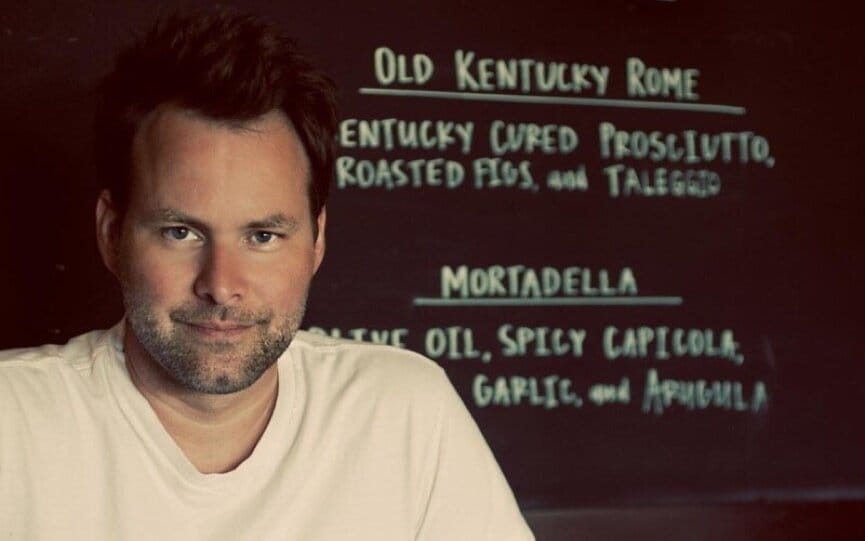Restaurant Social Media Marketing: Chef Neal Brown Dishes Advice

Restaurant social media marketing was the topic of conversation when Firebelly’s CEO Duncan Alney recently sat down with Chef Neal Brown.
If you’re unfamiliar with Brown, he’s well known for his impact in the restaurant industry. Indianapolis locals might recognize some of his iconic restaurants: Pizzology Craft Pizza and Pub, Moon Rabbit Ramen, Libertine Liquor Bar, Ukiyo, and Midtown All Day — expected to open this spring.
Brown is a James Beard Award Nominee, founder of Dig IN and an ambassador of Indianapolis. And, according to Duncan, he’s a CEO of badassery and a music aficionado — playing great music in his restaurants.
Being the founder of some of Indianapolis’ most influential restaurants, Duncan wanted to pick Brown’s brain about the restaurant industry and talk restaurant social media marketing. With so many steps in getting a restaurant started, in general, it can be challenging to know where to begin social media marketing.
Getting Started
Brown’s first step in restaurant social media marketing is brainstorming name ideas for his restaurant. He then makes sure the social handles are available on the social channels he’ll be using before settling on a name. Having a consistent brand that is relevant to the property across social channels is important to him before moving forward.
“Understand who you’re talking to,” said Brown. “You have to not only know who your audience is socially, you have to know who your audience is at the restaurant property. That’s probably even more important, frankly.”
Before Brown starts creating online content, he gets to know and understand his audience both online and in person. Knowing your audience at the restaurant can make good impressions that lead to word-of-mouth marketing and set a restaurant up for repeat customers, not to mention social advocates.
Eating With Our Eyes
Social media has changed the restaurant experience for consumers. With a focus on checking into restaurants and sharing images of food, restaurants have to always be at the top of their game. Especially when it comes to creating aesthetically pleasing and photo-ready meals. With most meals being documented online there leaves little room for mistakes from restaurants. Brown sees this as positive and negative. It holds chefs accountable for the food they present while at the same time showcasing food as an art form.
“We put a lot of effort into making things look beautiful,” said Brown. “Instagram is a platform that demonstrates that.”
Restaurant Hardship
The restaurant industry is also changing. Brown remembers a time when marketing wasn’t the driving factor for getting people into your restaurant. Now there are higher levels of competition not only within the industry but between takeout, backyard BBQs and just about any social event that prevents people from dining in a restaurant. A strong marketing plan prior to open a restaurant can be a leading factor in the success of a restaurant.
Last year, Brown rebranded his Massachusetts Avenue Pizzology location to Stella, serving European coastal-inspired cuisine. Due to competition and missed marketing opportunities, Stella closed its doors this past February.
Restaurant Success
With a new perspective on opening restaurants in the “restaurant renaissance,” Brown enhanced his marketing strategy by including influencer marketing to drive traffic and expand his reach. The results proved successful and his latest restaurant, Ukiyo, has a bright future.
“[When opening Ukiyo] we made a very concerted effort to reach out to as many social influencers locally as we could,” said Brown. “I think it made an enormous difference. And we got to tell our story on our terms.”
Brown also takes advantage of how inexpensive Facebook advertising can be when he’s seeking to reach thousands of Indianapolis locals. He also understands the importance of having an active presence on social media.
“I was looking at a Facebook ad report and for $3.57 we reached 14,000 people,” said Brown. “I’m not sure what the quality of that — what we would call a touchpoint — was, but it’s a pretty good return on investment for $3.57.”
Productive Contention
Known for contention online, Brown shares how his voice and tone have evolved across the years. Brown’s contention stems from being extremely passionate, especially when it comes to the restaurant industry. Learning how to productively express his passion is a lesson he’s learned and shared with other fellow chefs and owners. Having awareness of how you represent yourself online, especially when representing a brand, is crucial when connecting with consumers and creating first impressions.
When Brown isn’t representing his restaurants online, he’s seeking out inspiration and information. For Brown, on a personal level, he’s using social media to check out photographers, architects, chefs, and other creatives. It’s less of a social community and more of an educational experience.
Social Media Advice
Brown manages his restaurants’ social media accounts and advertising in-house. Alney asked what advice he would provide restaurants when it comes to social media marketing. His advice is definitely relatable across industries.
“Give people a reason to seek you out,” said Brown. “Have a point of view and be able to articulate it in a way that impassions people.”
Restaurant social media marketing starts with presenting information that is relevant to a target audience in an engaging, persuasive and creative way. So find what makes your restaurant different from competitors. Focus on what your audience online and in-person are interested in. And present creative content in way that encourages action. Lastly, don’t forget the value your advocates and influencers bring to telling your restaurant’s story.
You can watch their full Facebook Live video about restaurant social media marketing here.



